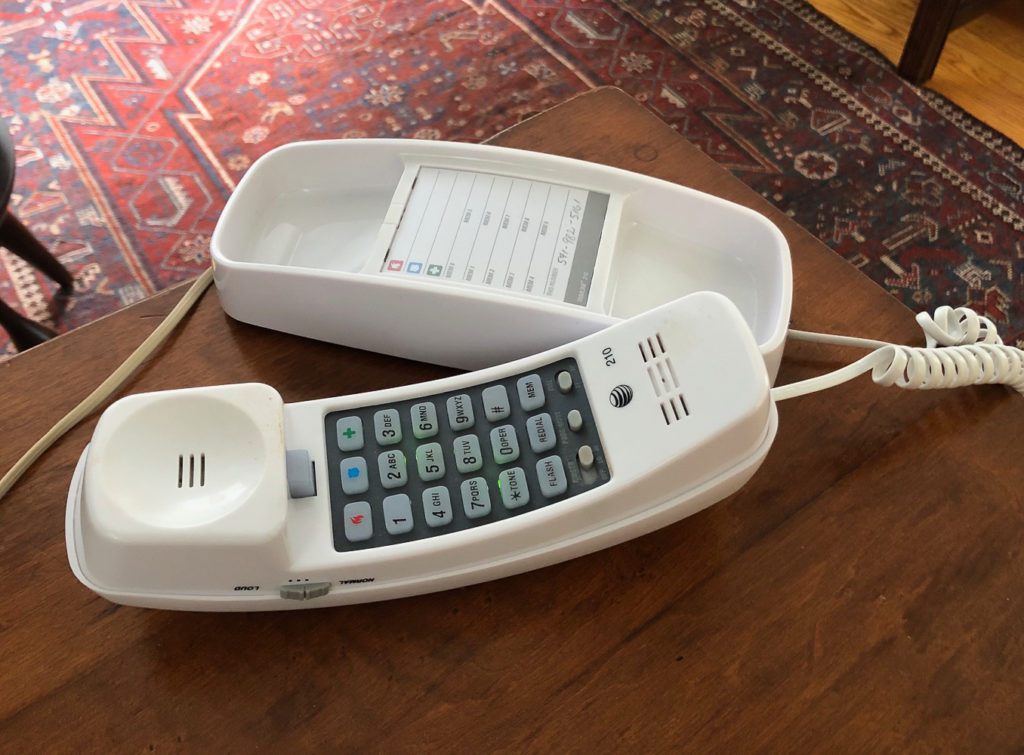Regular readers of this blog, who are accustomed to receiving email notifications each time a new segment appears, don’t need to be told that things went a bit awry last time we posted. Neither the cause of the glitch nor the means to correct it was easy to determine. The “technical” problem that we experienced was merely a brief disruption to routine, but it took time and expertise outside of our own skillset to solve. Being forced to deal with that inconvenience, however, also helped bring into clear focus just how important that lines of communication, on which we have come to depend in this unsettling time of coronavirus, actually are.
Lines of communication, we call them; and in that familiar expression the word “line” implies the means for making a connection. In fact, the line is what enables us to establish a connection. Or so it does when it functions according to plan and its purpose.
When we stopped to consider it we realized that lines – all types of lines – seem to be defining, or at least characterizing, our lives in recent months and in this era of coronavirus. Just think about the pictures and the stories that all types of media parade before us. There are and have been: COVID-19 testing lines; growing unemployment lines; police lines; lines for donated food and other essentials, designed to prevent the food lines like those of the Depression; lines to enter the grocery store; lines taped to or painted on the sidewalk that are six feet apart to assure safe social distancing among folks waiting to get in; lines on the floor to space us from one another at check-out; that is, lines to get in and lines to get out. The one thing that all of these well-meaning and, health experts tells us, necessary lines share is this. They separate and divide us and hamper that sense of community and human connection that we all need to maintain healthy and happy lives.
In this context, we have become particularly mindful of the one group of folks who rarely populate these lines, or if they do it is often only at specially designated times set aside for them. Yes, we are speaking of the older generation – those individuals age 65 and older, or folk with underlying health conditions, and of course those confined (yes, confined) to facilities and residences that were designed to care for those people “of a certain age.”
As time has moved on, as it always does, those policies and procedures, like quarantine, have become or are at risk of having the opposite of effect of that for which they were intentioned. Long-term quarantine can easily morph into a prescribed isolation that can be deleterious to both health and hope. But there is something that each and every one of us can do. Wherever we are and whoever we are, we can become lifelines. Yes, lifelines. In hearing that term some of us may remember the popular television show that posed difficult questions to contestants. If they didn’t know the answers, they were allowed to use one of their allotted “lifelines” to call a friend to help.
We believe that there is an important lesson there. And it doesn’t have to do with knowledge or expertise at all. It has to do with care and kindness. It has to do with community and it really is an important part of the cure for loneliness that is plaguing so many these days. Remember phone lines? In this world of cell phones and virtual reality we may rarely think of phone lines. But in this pandemic world we need to remember just how simple it is to be a lifeline to someone lonely and in need. It is as simple as dialing a phone.
It is up to us to keep the lines of communication and connection open. Let’s challenge that old expression “out of sight, out of mind” and keep our elder citizens, one by one, in our line of sight. Pick up the phone, reach out. When you do, you just may be a lifeline and in this real world of COVID, unlike on the tv game show, you have unlimited lifelines to share. Use them.


